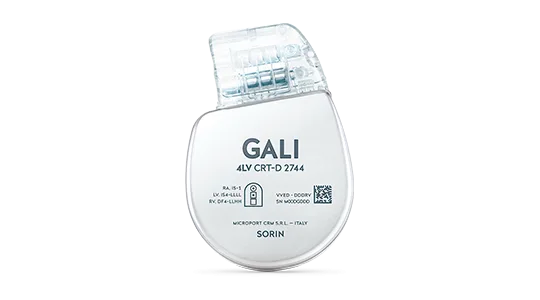PlatiniumTM 4LV SonRTMTM CRT-D
PlatiniumTM 4LV SonRTM CRT-D gibt jedem Patienten die Chance, ein Responder zu sein dank multipler Therapieoptionen und bietet die weltweit längste progostizierte Laufzeit.1
Besonderheiten
- SonRTM: Der weltweit einzige Kontraktilitätssensor für automatische CRT- Optimierung. 35% Risikoreduktion für HF-Hospitaliserung.2
- PARAD+TM: Weltweit erster Zweikammer-Diskriminierungsalgorithmus. Best-in-class mit 99% Spezifität.3
- BTOTM: Voneinander unabhängige Brady- und Tachytherapien in der Slow VT Zone. 96% Spezifität. 4
- Multipoint PacingTM: Optimierte Resynchronisation für non-Responder Patienten.5
Dieses Produkt ist nicht für den Verkauf oder Vertrieb in den USA verfügbar.
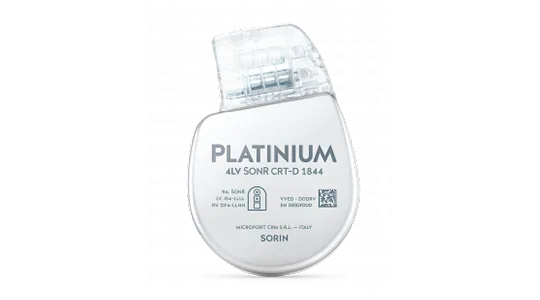
PlatiniumTM 4LV CRT-D
PlatiniumTM 4LV CRT-D ist klein im Design ohne Kompromisse bei der Ausdauer: Weltweit längste progostizierte Laufzeit.1
Besonderheiten
- PARAD+TM: Weltweit erster Zweikammer-Diskriminierungsalgorithmus. Best-in-class mit 99% Spezifität.2
- BTOTM: Voneinander unabhängige Brady- und Tachytherapien in der Slow VT Zone. 96% Spezifität. 4
- Multipoint PacingTM: Optimierte Resynchronisation für non-Responder Patienten.4
Caution: Federal law (USA) restricts this device to sale by or on the order of a physician.
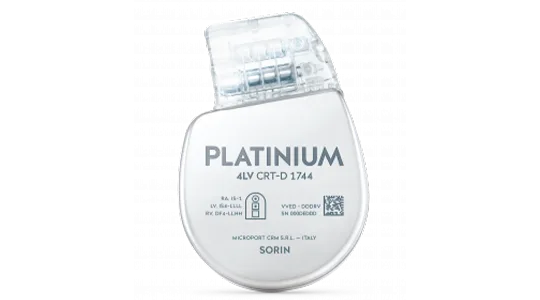
ReplyTM CRT-P
Dank unserer bahnbrechenden Forschung konnten wir den weltweit kleinsten Herzschrittmacher zur kardialen Resynchronisationstherapie entwickeln.1
Besonderheiten
- Sleep Apnea MonitoringTM: Frühe Erkennung, lebenslanges Monitoring. SAM bietet das Screening auf schwere Schlafapnoe und das Monitoring des Krankheitsverlaufs.
- Dual SensorsTM: CRT benötigt präzise Frequenzadaptation. Die positiven Effekte von Bewegung auf Mortalität, Morbidität und Lebensqualität sind erwiesen für CRT Patienten.2,3,4
Caution: Federal law (USA) restricts this device to sale by or on the order of a physician.
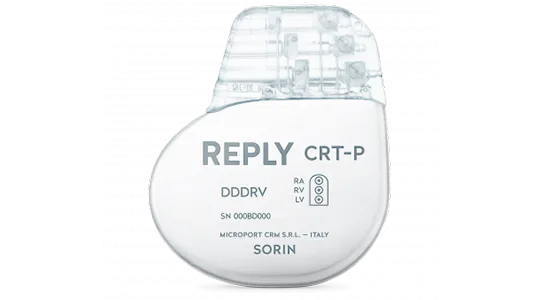
GALI SONR
EXCELLENCE ENGINEERED.
Gali SonR verfügt über bewährte und physiologische Algorithmen, die Ärzten dabei helfen, ihren Patienten eine qualitativ hochwertige Versorgung zu bieten, sei es in der Klinik oder aus der Ferne, was zu einer höheren Responderrate der kardialen Resynchronisationstherapie (CRT) und den besten klinischen Ergebnissen führt. Seine herausragende Laufzeit1 verhindert die klinische und finanzielle Belastung, die ein Austausch mit sich bringt2.
Besonderheiten
- SonR™: 75% klinische Responder: die höchste jemals berichtete Responderrate mit automatischer, geräte-basierter Optimierung.3, 4, 5, 6
35% Risikoreduktion für Herzinsuffizienzhospitalisierungen.3
- PARAD+™: Niedrigste jemals berichtete Rate inadäquater Schocks in der medizinischen Literatur.7
- BTO™: Voneinander unabhängige Brady und Tachyprogrammierung in der Slow VT- Zone. 96% Spezifität in der Slow VT- Zone.8
- Multipoint Pacing™: Optimierte Resynchronisationstherapie für Non-Responder mit Herzinsuffizienz.9
Dieses Produkt ist nicht für den Verkauf oder Vertrieb in den USA verfügbar. Für weitere Informationen zur Produktverfügbarkeit wenden Sie sich bitte an Ihren lokalen Ansprechpartner.
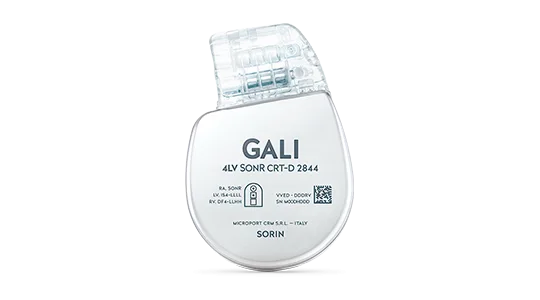
GALI
Art of performance.
Gali verfügt über effiziente und bewährte Algorithmen, die Ärzten helfen, ihren Patienten eine qualitativ hochwertige Versorgung zu bieten, egal ob in der Klinik oder aus der Ferne. Seine herausragende Langlebigkeit1 verhindert einen frühzeitigen Austausch und die voreingestellte Programmierung macht die Einrichtung zu einem Kinderspiel und optimiert Ihre Ressourcen und Arbeitsbelastung.
Besonderheiten
- PARAD+™: +™: Niedrigste jemals berichtete Rate inadäquater Schocks in der medizinischen Literatur.2
- BTO™: Voneinander unabhängige Brady und Tachyprogrammierung in der Slow VT- Zone. 96% Spezifität in der Slow VT- Zone.3
- Multipoint Pacing™: Optimierte Resynchronisationstherapie für Non-Responder mit Herzinsuffizienz.4
Dieses Produkt ist nicht für den Verkauf oder Vertrieb in den USA verfügbar. Für weitere Informationen zur Produktverfügbarkeit wenden Sie sich bitte an Ihren lokalen Ansprechpartner.
